19 Epilogue: Time to Revisit “Griffith” Park
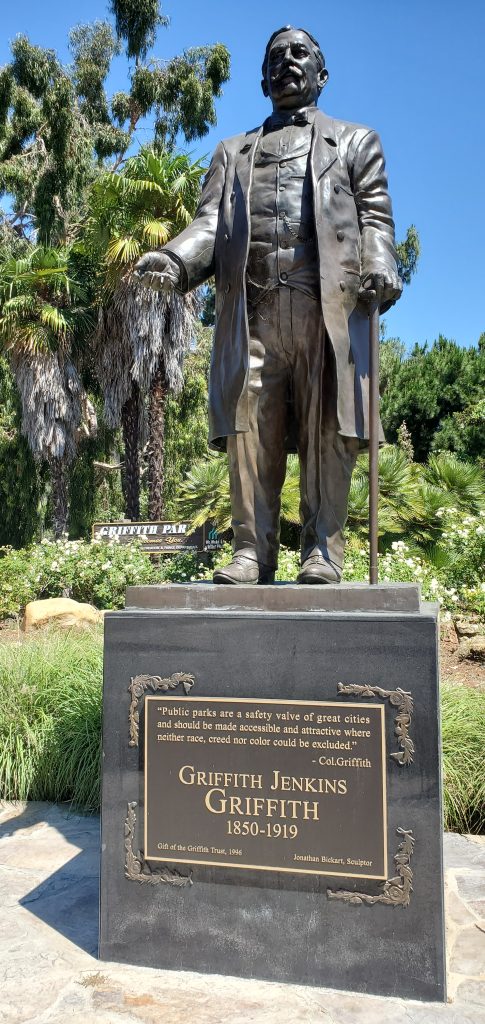
The Griffith Jenkins Griffith story is oh so LA — not the happy-Hollywood-ending kind, but the one thick with money, power, ego, alcohol, crime and contradictions.[1] And yet anyone visiting Griffith Park is introduced only to the philanthropic “Colonel Griffith J. Griffith”. Not a word about Tina, about Grif’s crime and time at San Quentin, or even about Van’s long and lasting contributions.
The most prominent tribute, at the Griffith Observatory, greets visitors inside the front entrance where it is hard to miss. A large portrait of Grif sits below his words: “If all mankind could look through that telescope, it would change the world!” A copy of the deed donating the park is to the right. Below that are two panels describing how Grif got wealthy via mining and real estate, and that “he decided”, “he wanted” and “he donated” the park. After noting Grif’s passion for astronomy, the panels celebrate “A Visionary Spirit” and an inspiring immigrant story: from Grif’s birth in Wales, to his leaving for America as a teen, to his making a fortune and then dedicating himself to improving Los Angeles and its crown jewel of a park.
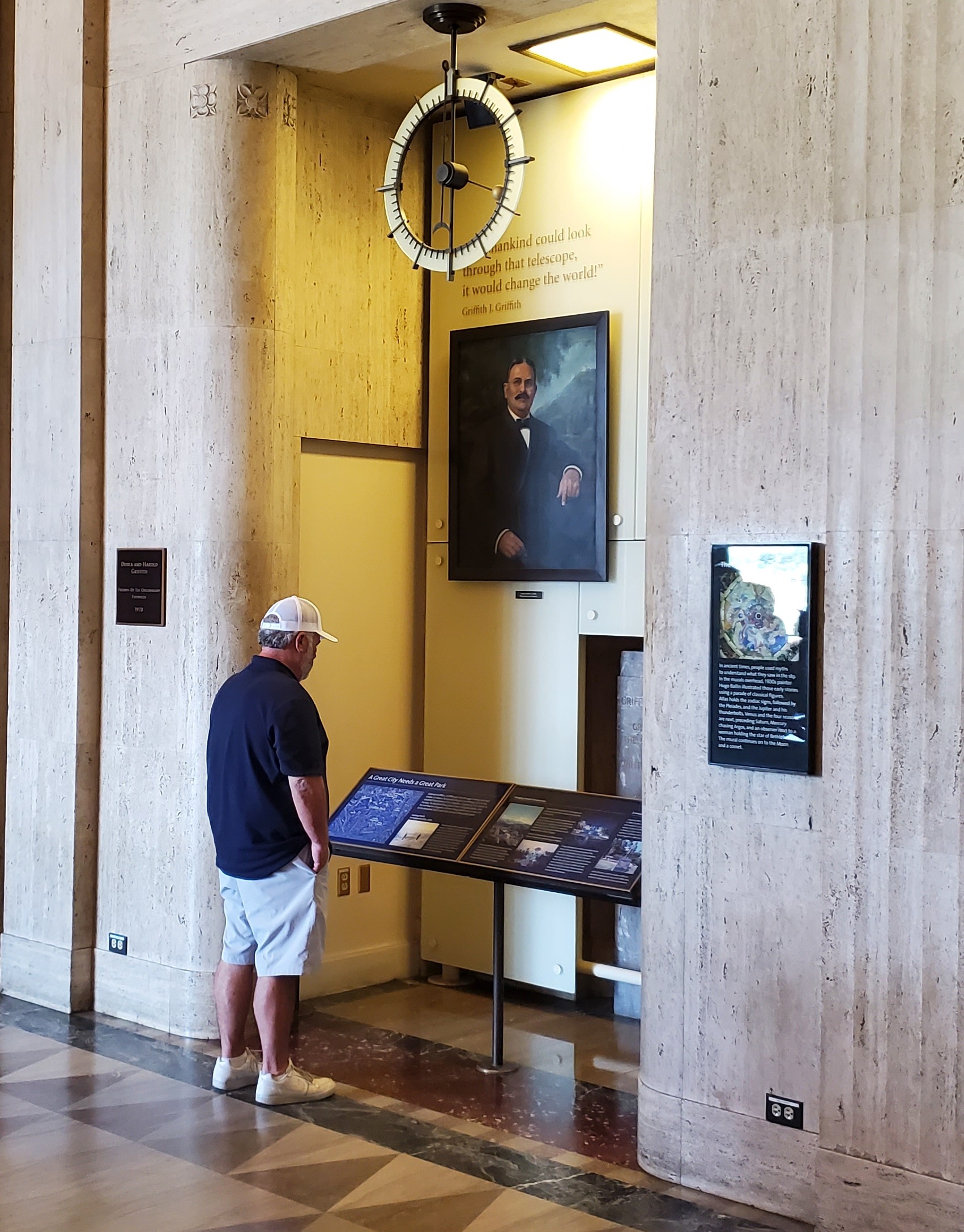
All of that is true, but it omits so much. It’s certainly not fair to Tina, whose fortune allowed Grif to donate the land and whose name IS on the deed. It’s not fair to tourists or Angelenos, who should see that even a visionary philanthropist can be a deeply flawed figure. It’s not even fair to Grif’s descendants. Van’s children and their children should be proud that Tina was part of the park’s origin story and proud, too, that Grif, as flawed as he was, really was enlightened and visionary in many ways.
If the fuller story of Griffith Jenkins Griffith is not shared, we lose the chance to honestly answer the tourist, the child, the curious local who asks: “Who was Griffith?”
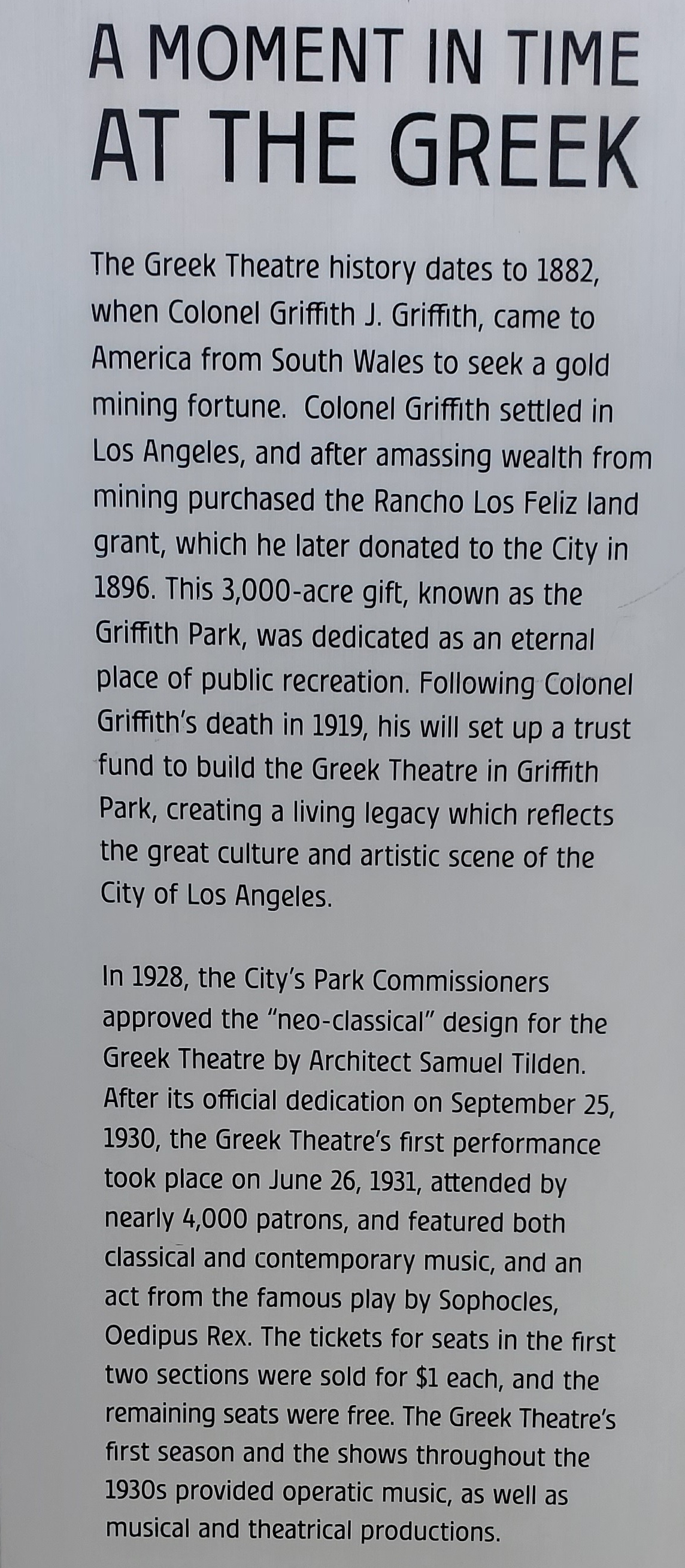
So how to correct the record? For one, please share what you’ve read here. I will work to also improve the wikipedia entries for Griffith Jenkins Griffith, Griffith Park, Griffith Observatory and the Greek Theater. But reading about Grif online or in a book is just part of what needs to happen. There’s an opportunity to share the fuller story of Griffith J. Griffith with the millions who visit Griffith Park annually and the 10 million Angelenos who live around it.
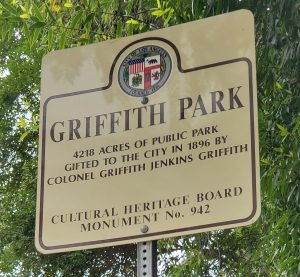
Perhaps it starts with tour guides incorporating more of the facts. Also, The Autry Museum of the American West, which sits in the park and even had an “Investigating Griffith Park” exhibit, could start a conversation on how to properly tell the fuller Griffith story.
Most important, though, is what the City of Los Angeles, which manages the park, should do. To start with, improve its park website, its signage at the park’s main entrance, at Grif’s statue, at the Greek Theater and, especially, at Griffith Observatory.
An even more meaningful move would be to have a conversation about whether to modify the park’s name. It is true that, per the deed, any name change would allow the Griffith descendants to take back the 3,015 acres donated in 1896. But what if they bought into the idea of renaming the park to honor not just Grif, but also Tina, Van and later Griffiths who continued the family tradition of protecting the park? Perhaps a change as simple as Griffiths’ Park, or the Griffith Family Park?
At the very least, discussing the idea of a name change would start a public process where tourists and Angelenos could learn about Tina and that there is more to the benevolent “colonel” than what visitors are now shown. That the park itself, described by its chief historian Mike Eberts as “rough around the edges”, is a metaphor for the true Grif. Not a perfect benefactor, but the enlightened egomaniac that he should be remembered as.
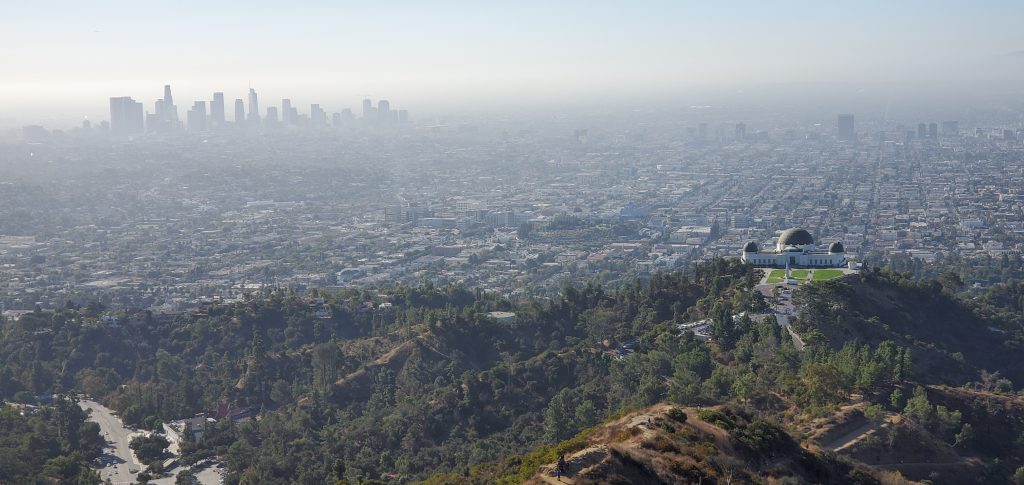
- Kevin Starr in Americans and the California Dream, pp440-441, sees the contradictions in the varied lifestyles of Southern California -- from the "unrestraint" to prudish religious communities -- as reflecting "a quality of schizophrenia", not unlike Grif's own life! ↵